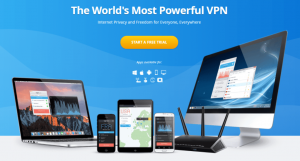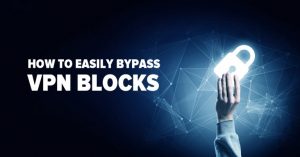The most important task of the school, along with the education of students, to protect them while they are. Therefore, many schools filter their Internet content and block certain sites to protect students from harmful content. At the same time, schools should teach students how to use the Internet responsibly. In the home or school, with the proper instructional children, you can be taught to be responsible citizens of the digital. In addition, some businesses also block websites to reduce distractions, maintain bandwidth, or censor the content. Sometimes you may need to access blocked sites for genuine reasons. What would you do to gain access to a blocked website?
This article will tell you about the methods to unlock useful websites. However, it is recommended that whether at school or at home or office; you must obtain permission from the relevant body to unblock the website to avoid unpleasant consequences. Unblock sites in school, home or office

You can use the following methods to bypass censorship of content. Not all methods will work in every installation. So, you should try it all and see what one works for you.
Use Google Web Light
When viewed on a slow mobile internet connection, Google Web Light removes CSS styles and JavaScript to provide a truncated version of the web page from Google servers. Because content is provided from a Google server, software blocking assumes that you are visiting Google, while you actually view the blocked site. Google Web Light is designed for mobile devices with slow Internet access, but you can also access it from your computer.
Saved method Link
Most search engines support the cache of web pages indexed by them. You can find the website you want to unlock on these search engines, and click on the link in the cache that is given next to the result. For faster loading of web pages, you can visit the text version. Since accessing the site from the search engine servers, it overcomes the IP address and filter URL based on.
Using the translation service
You can use the services of an interpreter, like Google Translate, Microsoft Translator, or Yahoo Babel Fish. These translators are like a free proxy server in which he selects a website and displays it to you without your visiting the site directly. The trick is to ask these services to translate English pages into English. For example, visit a restricted website using Microsoft Translator:
- Go to Microsoft Translator (also known as Bing Translator).
-
Enter the limited address of the website in the box on the left and let the translator auto-detect the language.

- Select English translate, right and click Translate.
-
Use the services of an interpreter to unlock sites in school, at home, in the office
The translated web page will open in a new tab in your browser. Continue viewing as usual.
Virtual private network
VPN or Virtual Private Network software acts as a tunnel under a public network that offers better anonymity than proxy sites. It encrypts data sent through a blocked site and offers complete anonymity when you access restricted websites.

Using Proxy Servers
Proxy servers are what bridging between your PC and websites. When you are limited to visiting the site directly, you can set a proxy server to visit it for you. The proxy server displays a blocked website, and you can start viewing in normal mode. Since you are communicating directly with the proxy server, and not with the forbidden site, the message is not blocked.
Just keep in mind that most free proxies are full of pop-ups and advertisements.
TOR
TOR or Onion Router is free software that hides its identity and online activities from monitoring and analyzing traffic by sharing identification and routing. This is one of the effective ways to circumvent the limitations of a website and protect your privacy.
Please be careful of Dark Internet if you use TOR.
Changing the DNS server
Sometimes, when a website is blocked, this happens because the DNS server prevents the location of the server from the blocked site. In such cases, the best way to unlock the site is to change the DNS servers in OpenDNS or Google DNS. Changing the DNS to unlock any website can also increase the speed of the Internet.

Use the IP address instead of the URL in the browser
Another popular way to unlock the site in school is to enter the IP address instead of the URL in the browser’s address bar. This method can quickly unlock Facebook in school or another site. However, if the lock program displays the IP address of the domain name of the site, the website will still be blocked. You can whistle the domain name of the site at the command line to find the IP address of the website.

- Press the Window + R key to open the Run dialog box.
-
Type CMD in the box, and then click OK. The black color of the command line will open.
-
Type the following command, and then press ENTER:
- Ping WebSiteName (for example, ping yahoo.com)
- You will receive the IP address of the website.
With the above methods, you can unlock sites as needed. As mentioned at the beginning of the article, they do not accept permission to unblock. After all sites have been blocked for your own security on the Internet and security at school, office and home.


Comments are closed.